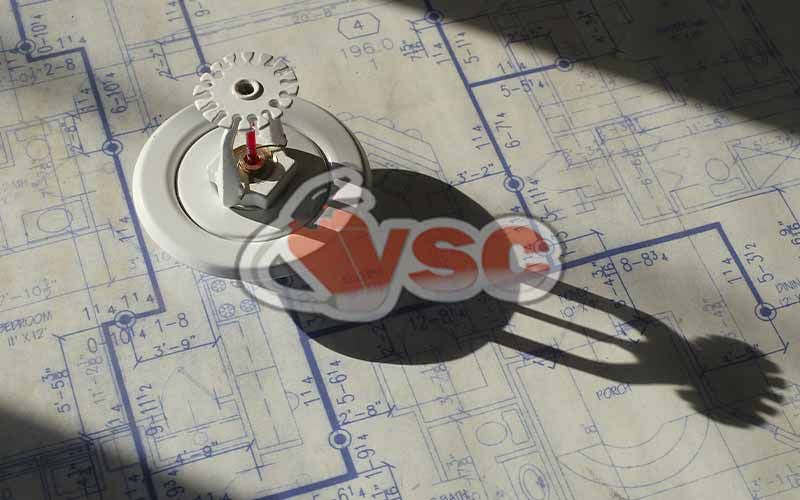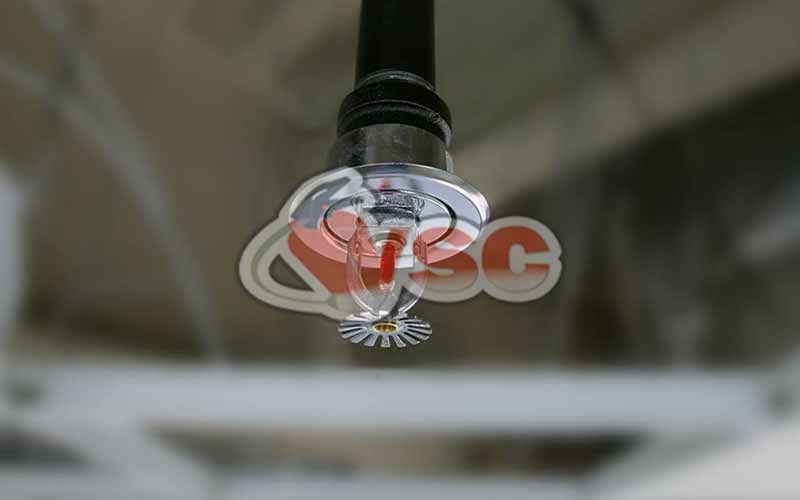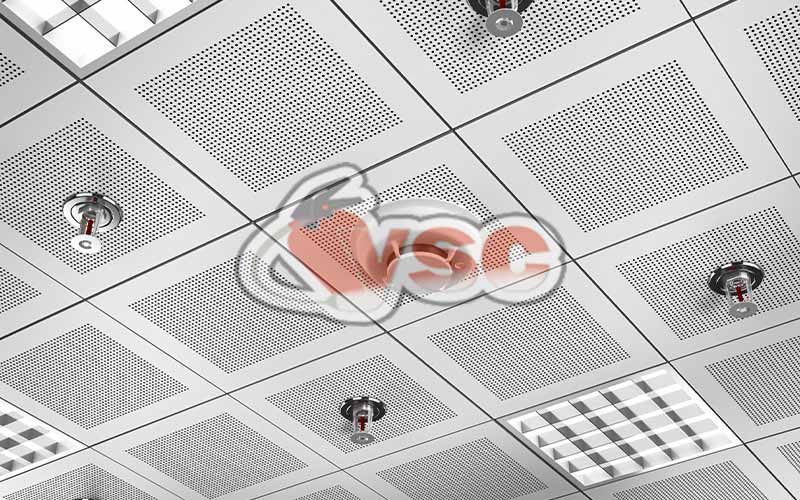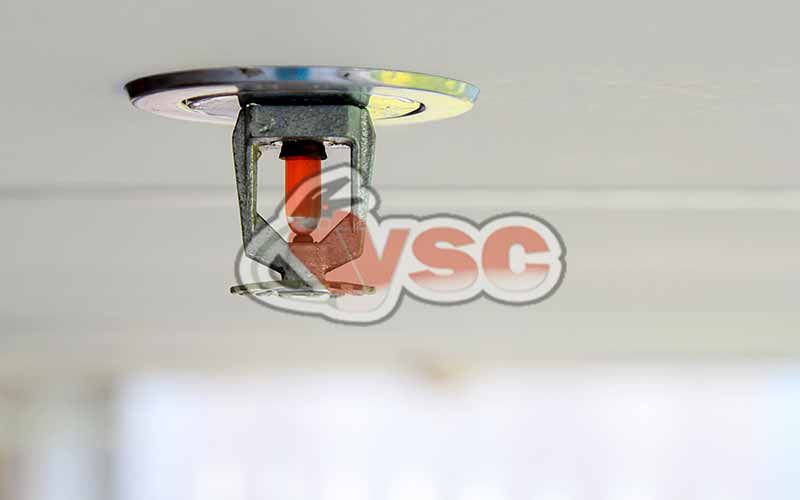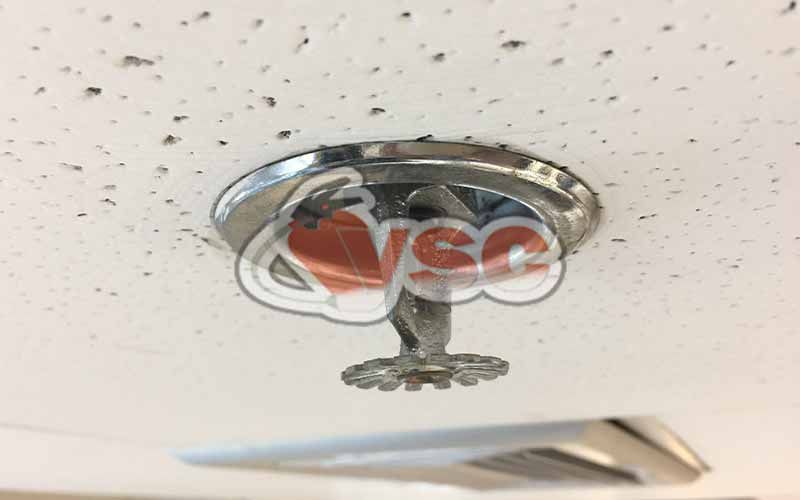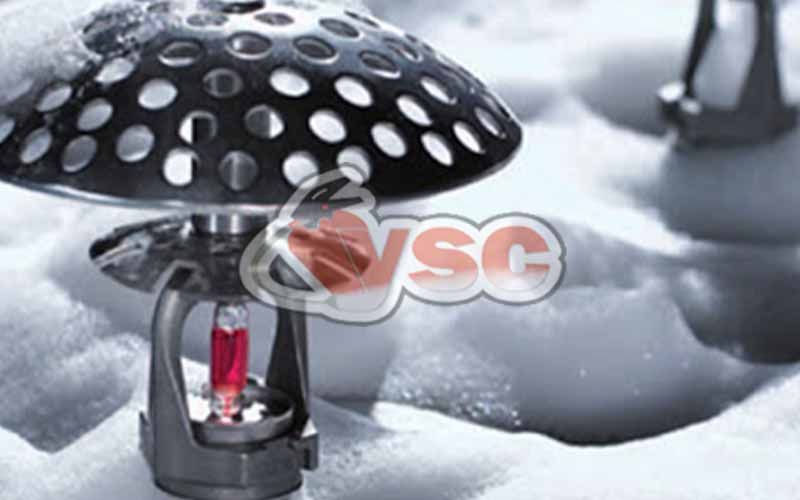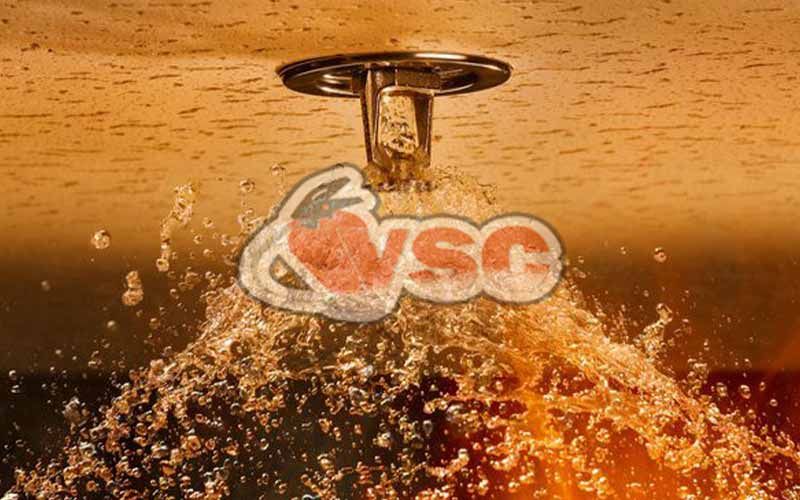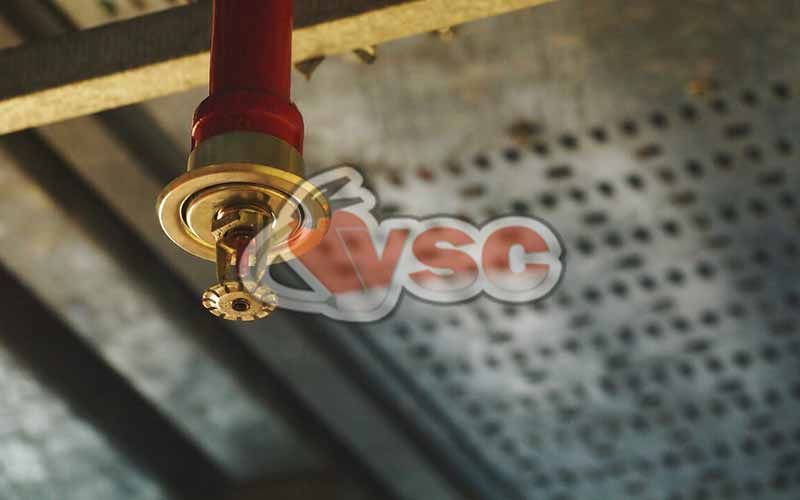Sprinkler Fire Suppression Systems
In situations where firefighting needs to be carried out from above, the sprinkler fire suppression system is used, which sprays water or the necessary chemicals onto the flames. Sprinkler fire suppression systems are installed to intervene in potential fires that may be considered late for manual intervention. When it detects flames, the sprinkler system immediately takes action, preventing the fire from growing and naturally reducing the risk of casualties and property damage. Described as a "rainfall system," the main advantage of this system is its rapid response to fires; as soon as the system detects high heat, it intervenes, ending the fire where it started.
One significant advantage of sprinkler fire suppression systems is their ability to quickly respond to fires. When it comes to A and C class fires, a single sprinkler in the system can protect an area ranging from 9 square meters to 21 square meters.
Sprinkler fire suppression systems are crucial in various settings, including commercial buildings, residential properties, industrial facilities, and public spaces. The rapid response and effective firefighting capabilities of these systems make them a reliable choice for fire protection.
Sprinkler Fire Suppression Systems are preferred in businesses where potential fires could result in significant financial losses. With their rapid response capability, these systems prevent materials and products in the area from being damaged, thus minimizing potential financial damages. Sprinkler systems should be installed by expert engineers after a detailed study (feasibility).
Types of Sprinklers
Different types of sprinkler systems can be used depending on the nature of the workplace or the materials used, considering the fire risk in the area. The most common types of sprinkler fire suppression systems in the market are wet pipe, dry pipe, deluge, and pre action sprinkler systems.
The wet pipe sprinkler fire suppression system is an automatic system that always has water in the pipes. When the temperature in the area rises, the system quickly activates, and the water in the pipes is discharged onto the fire intensively. This sudden action extinguishes the fire in its initial stage. It reduces the temperature of the burning material, extinguishes the flames, and reduces the height of the smoke, widening the field of view.
The dry pipe sprinkler fire suppression system is based on the principle of keeping water behind valves rather than inside the pipes. The pipes are filled with pressurized air instead of water. When the temperature rises due to a fire, the pressurized air opens the valve that will distribute water to the pipes, and water is then discharged onto the fire through the sprinkler. Unlike the wet system, the water that will fight the fire takes a bit more time to reach the fire.
The deluge sprinkler fire suppression system is based on the principle of having the alarm system that detects the fire located separately from the sprinkler system. While other sprinkler systems detect fires based on the rise in room temperature, the deluge system has a different and faster detection method through an alarm system. As a result, the system becomes active more quickly than wet and dry pipe systems. The sprinklers are open, but the valve is closed. When the fire is detected, the valve that activates the water is automatically opened, and the sprinklers that are already open discharge water more intensively onto the fire. This system is installed in places where fire can start and grow rapidly.
The pre action sprinkler fire suppression system, unlike the previous system, is a system where the sprinklers are not open. At the end of the sprinklers, there are heat-sensitive closures or thin glass bulbs with bursting capability. When the heat from the fire melts or bursts these closures, the system is activated.
Sprinkler System Calculation
Before the installation of the fire suppression system, it is necessary to perform a sprinkler system calculation. One of the methods, such as tree piping, loop piping, or grid piping, can be used to ensure sufficient spacing between the pipes. For buildings and structures with a usage area not exceeding 465 square meters, the sprinkler placement starts with 2 sprinklers for DN25 pipe diameter and increases gradually.
For DN32 pipe diameter, 3 sprinklers are used; for DN40, 5 sprinklers; for DN50, 10 sprinklers; for DN65, 20 sprinklers; for DN80, 40 sprinklers; for DN100, 100 sprinklers; for DN125, 160 sprinklers; and for DN150, 275 sprinklers are recommended. This calculation is done for low hazard class. The pipe laying method and the number of sprinklers to be installed are specified in the relevant regulations and Turkish Standards Institute (TSE) standard tables.
Sprinkler systems are legally required in certain areas. They are mandatory in high-rise buildings, offices higher than 30.50 meters, apartment buildings higher than 51.59 meters, enclosed parking lots with more than twenty parking spaces and multiple basement floors, guesthouses with a capacity of more than 200 beds, hotels, and pensions, businesses with a usage area of more than 2000 square meters, meeting rooms, entertainment venues, shopping malls, and stores. These requirements are enforced by relevant regulations.
-
FM-200 Gas Fire Suppression Systems
-
Kitchen Hood Fire Suppression Systems
-
Sprinkler Fire Suppression Systems
-
Carbon Dioxide Extinguishing Systems, CO2 (What is it? How is it used?)
-
FE25 Gas Extinguishing Systems (Working Principle and Price)
-
In-Panel Micro Extinguishing Systems (Electricity Panel)
-
Clean Gas Fire Suppression Systems (How Does It Work? Gases Used?)
-
NOVEC 1230 Fire Suppression Systems (Gas)
-
Argon Gas Extinguishing Systems (INERT Gas, Turnkey)
-
Vehicle Extinguishing Systems (Tube, Maintenance)
-
Fire Detection and Warning Systems
-
Foam Extinguishing Systems




